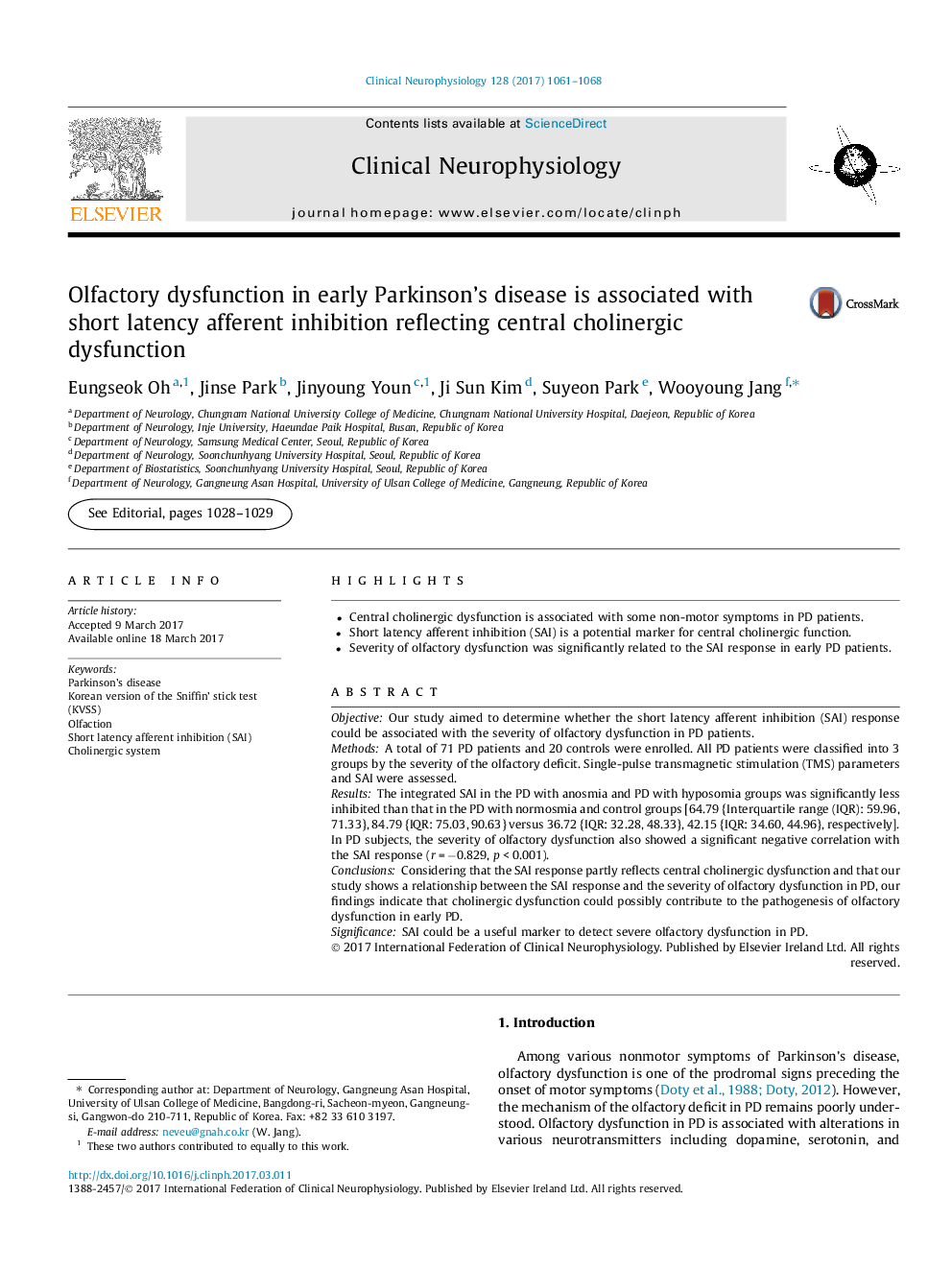| Article ID | Journal | Published Year | Pages | File Type |
|---|---|---|---|---|
| 5627913 | Clinical Neurophysiology | 2017 | 8 Pages |
â¢Central cholinergic dysfunction is associated with some non-motor symptoms in PD patients.â¢Short latency afferent inhibition (SAI) is a potential marker for central cholinergic function.â¢Severity of olfactory dysfunction was significantly related to the SAI response in early PD patients.
ObjectiveOur study aimed to determine whether the short latency afferent inhibition (SAI) response could be associated with the severity of olfactory dysfunction in PD patients.MethodsA total of 71 PD patients and 20 controls were enrolled. All PD patients were classified into 3 groups by the severity of the olfactory deficit. Single-pulse transmagnetic stimulation (TMS) parameters and SAI were assessed.ResultsThe integrated SAI in the PD with anosmia and PD with hyposomia groups was significantly less inhibited than that in the PD with normosmia and control groups [64.79 {Interquartile range (IQR): 59.96, 71.33}, 84.79 {IQR: 75.03, 90.63} versus 36.72 {IQR: 32.28, 48.33}, 42.15 {IQR: 34.60, 44.96}, respectively]. In PD subjects, the severity of olfactory dysfunction also showed a significant negative correlation with the SAI response (r = â0.829, p < 0.001).ConclusionsConsidering that the SAI response partly reflects central cholinergic dysfunction and that our study shows a relationship between the SAI response and the severity of olfactory dysfunction in PD, our findings indicate that cholinergic dysfunction could possibly contribute to the pathogenesis of olfactory dysfunction in early PD.SignificanceSAI could be a useful marker to detect severe olfactory dysfunction in PD.
